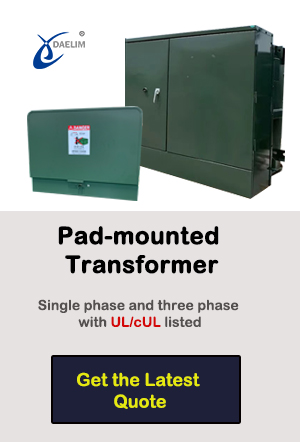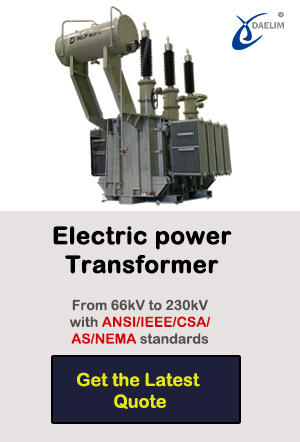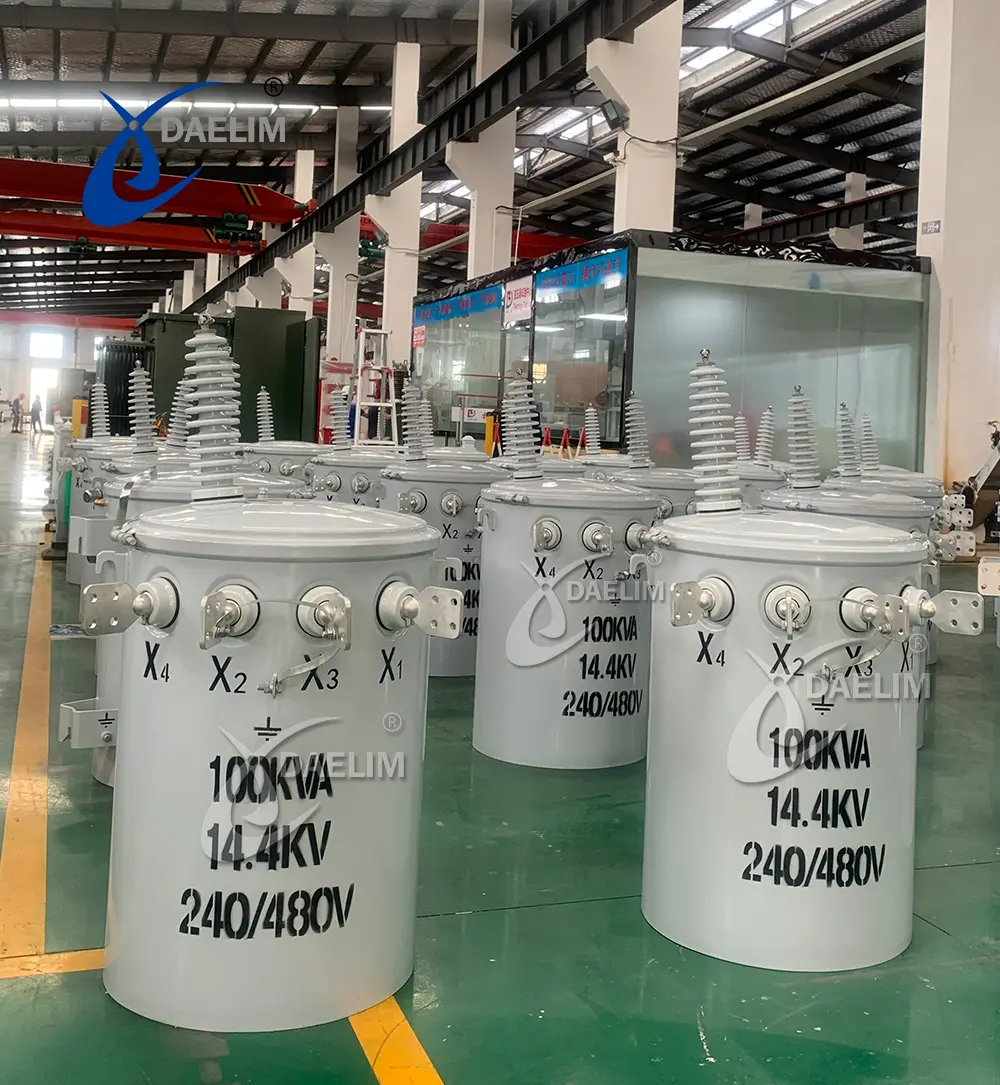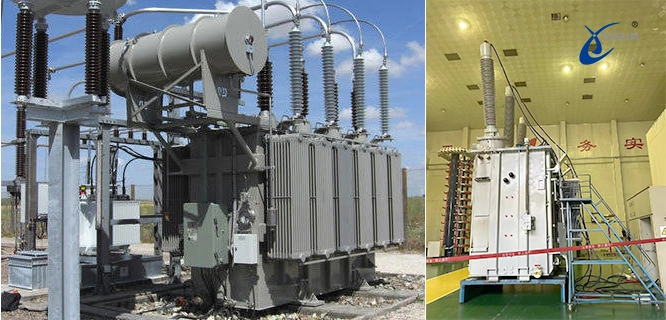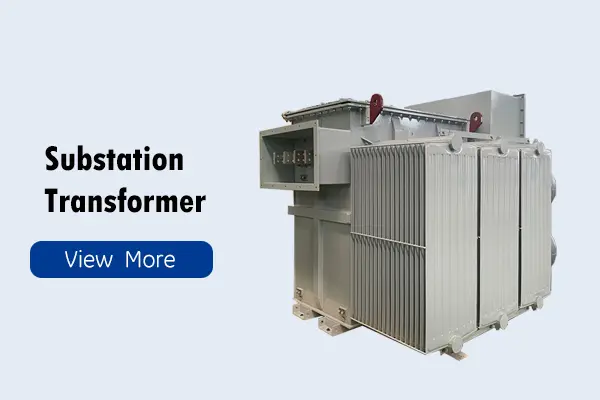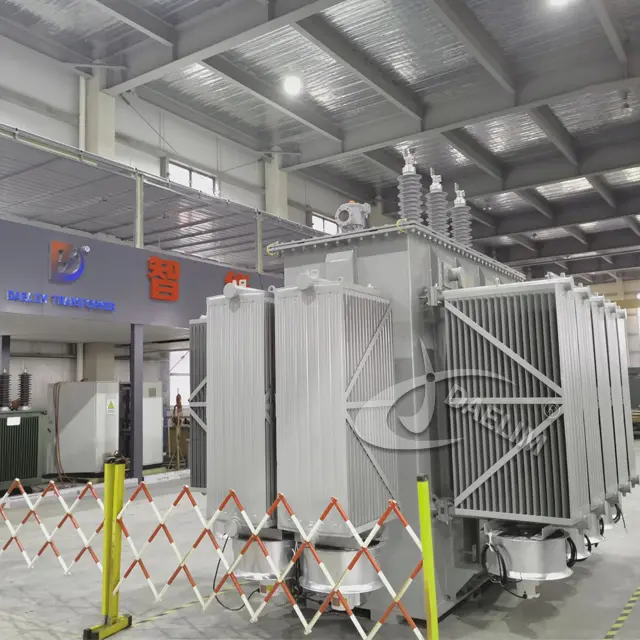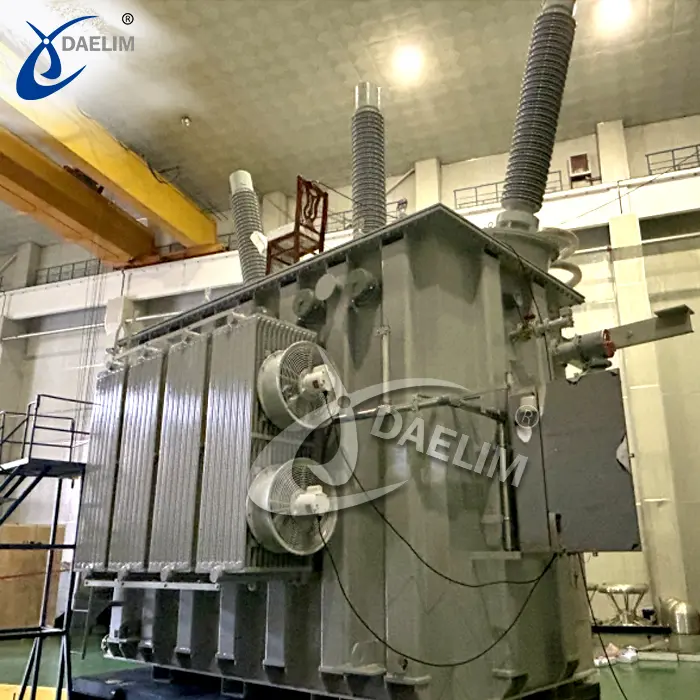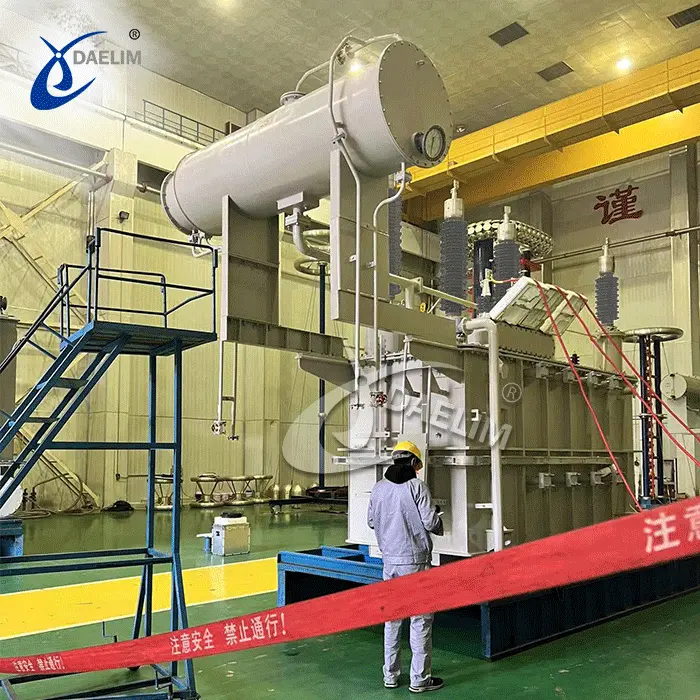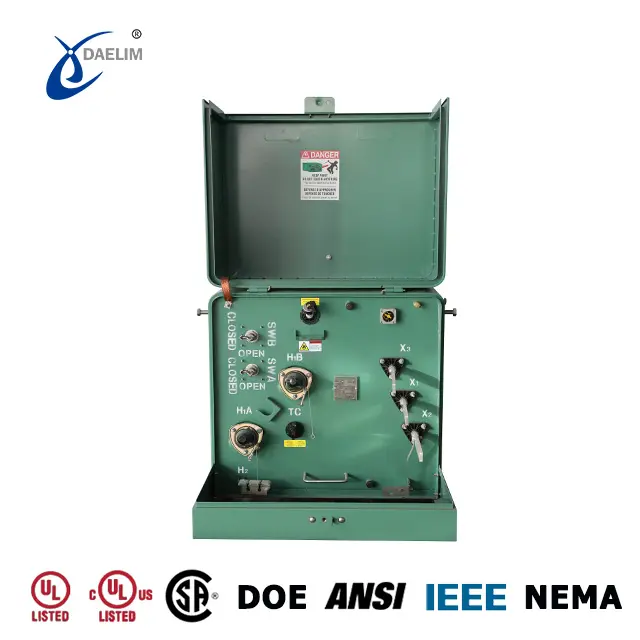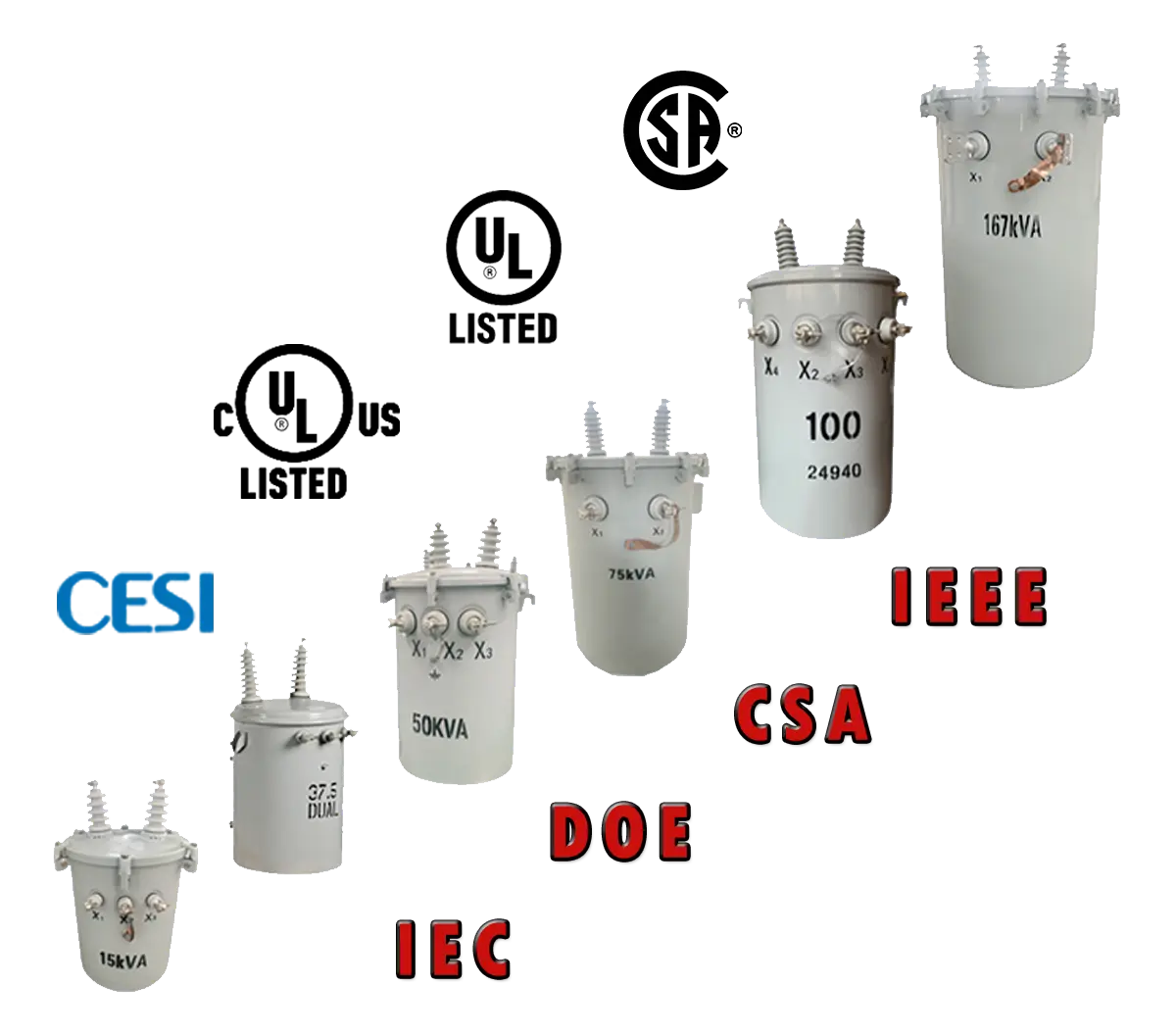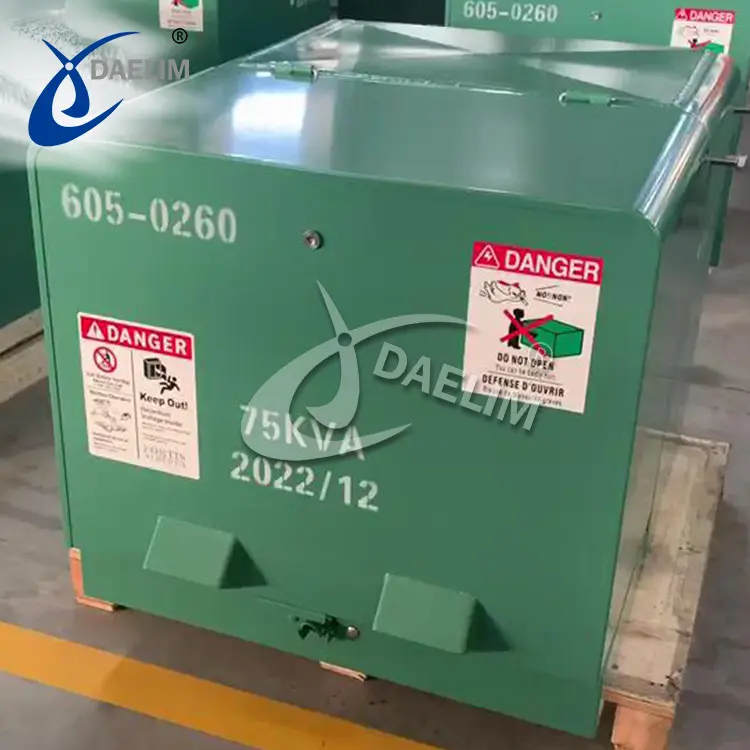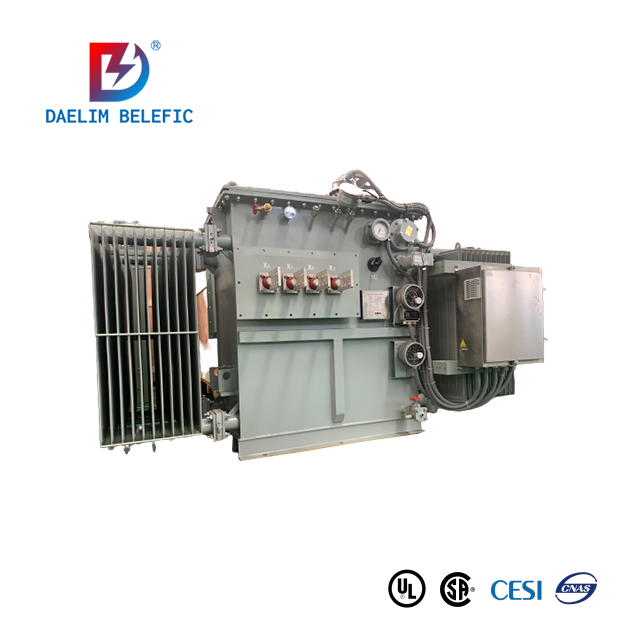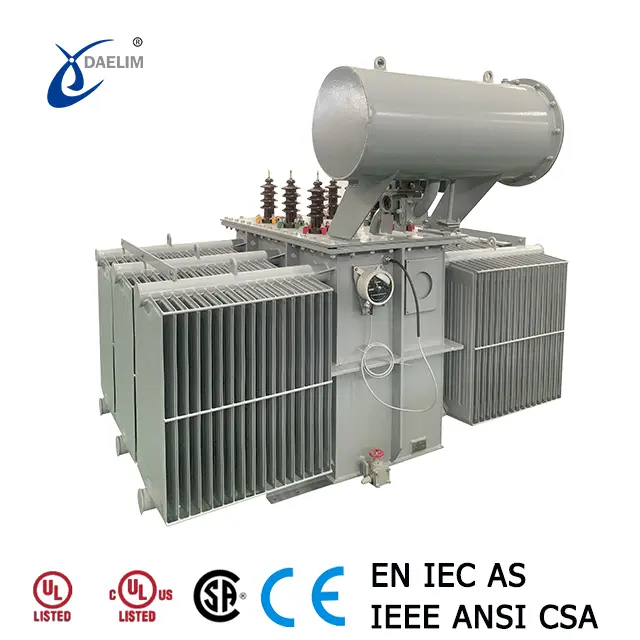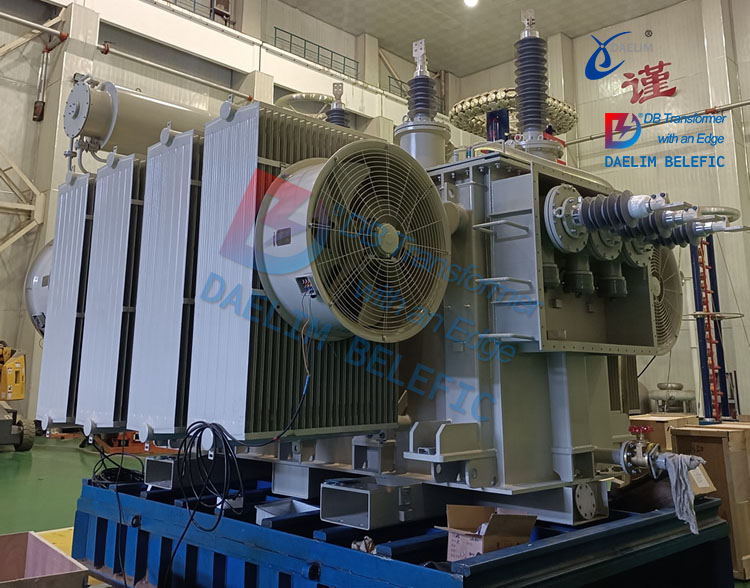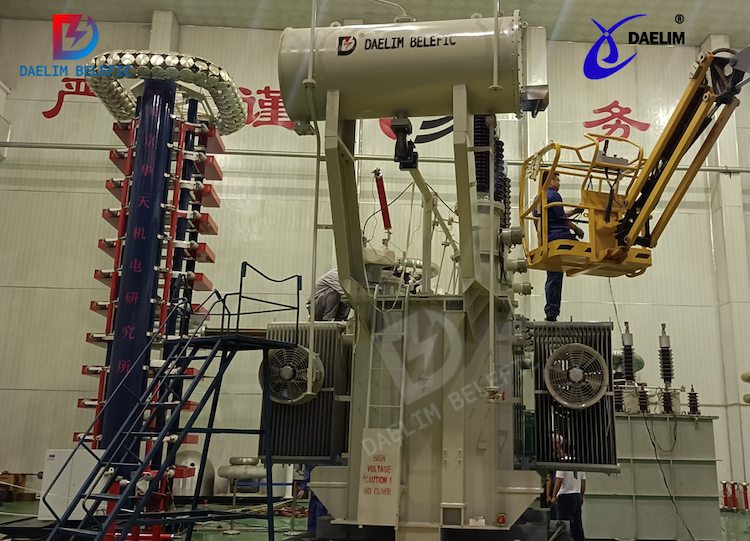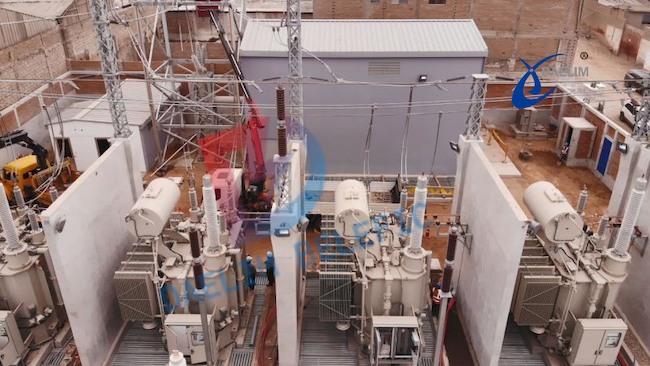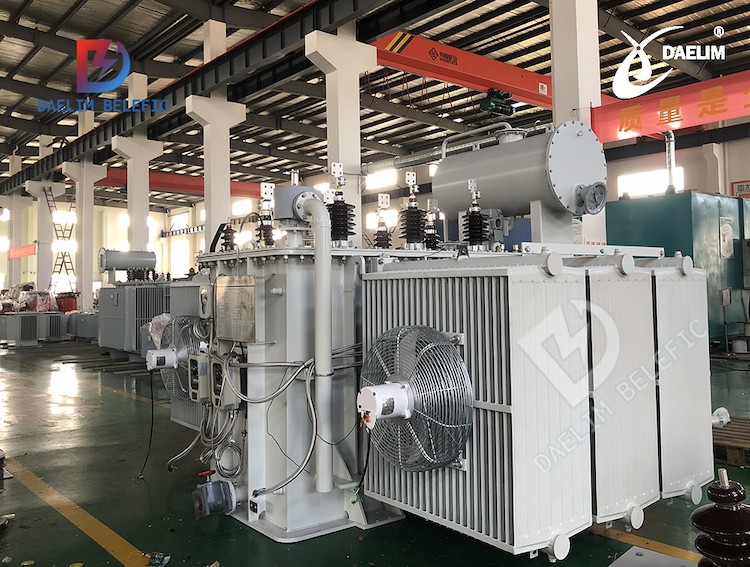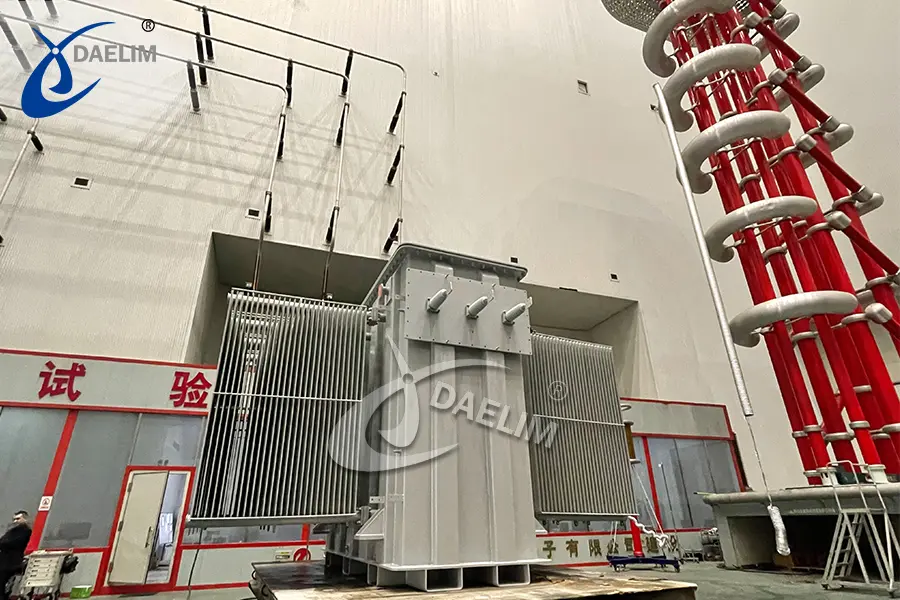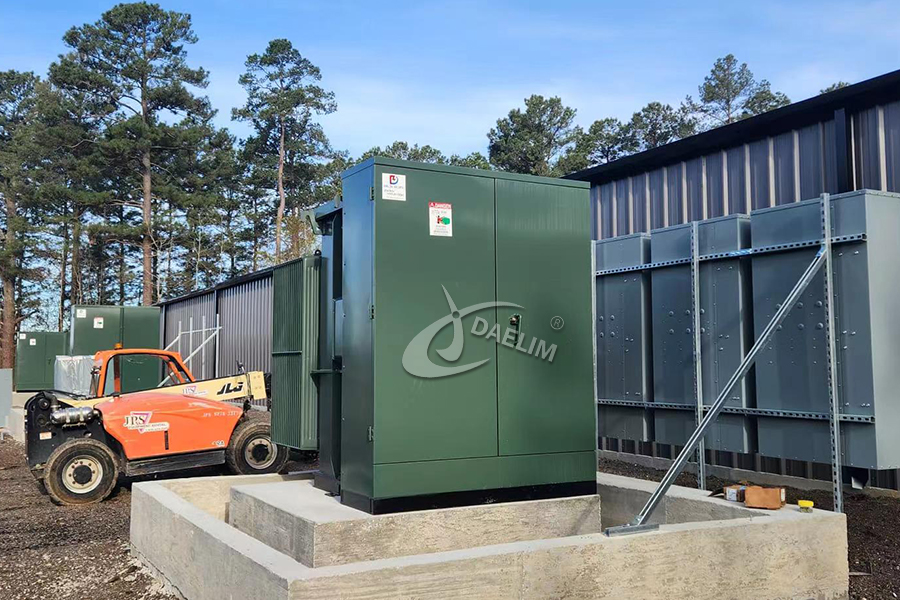Transformer Efficiency: The Ultimate FAQs Guide - Daelim
Electrical devices like power transformers are highly efficient and reliable devices. The transformer is a static device with no moving parts, which makes it very rugged and durable. However, some power is still lost during transformer operation. If you want to learn more about transformer efficiency and the losses that occur during transformer operation, read on for our comprehensive FAQs guide.
What is Transformer Efficiency?
The ratio of output power to input power is known as transformer efficiency. It measures how effectively a transformer converts DC electrical energy from one form to another. Transformer efficiency is measured in terms of percentages with a range of 97% to 99%.
Determining transformer efficiency is essential to understanding how well the transformer works and whether it needs to be repaired or replaced. Transformer efficiency can be affected by many factors, including transformer losses, transformer size, transformer type, and load.
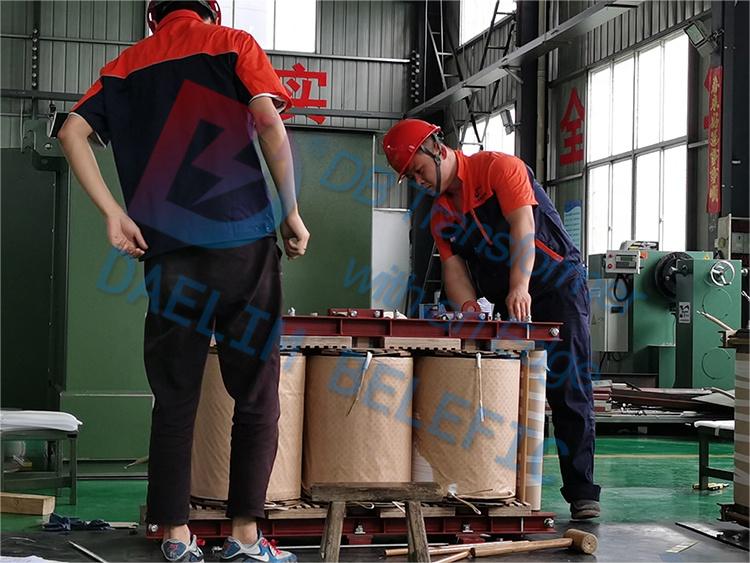
What is the Transformer Efficiency Formula?
The effects of transformer loss can be measured by transformer efficiency, which is expressed in percentage. The transformer efficiency formula is:
η = Pout / Pin, where
η is the transformer efficiency expressed in percentage (%)
Pout = transformer output power (W)
Pin = transformer input power (W)
To execute transformer efficiency calculation, you must divide the output power by the input power and multiply the result by 100. That means 96.96% is the efficiency of a transformer with an output power of 1,600 Watts and an input power of 1,650 Watts.
Learn more: Surplus 15000 kva transformer for sale!
What's the Single-Phase Transformer Efficiency?
It's critical to construct a single-phase distribution transformer so that the maximum efficiency doesn't occur at a reduced load if you want it to be efficient. The average efficiency of a single-phase distribution transformer will depend on its size, but it typically ranges from 95% to 98.5%.
When a single-phase transformer is heavily loaded, the efficiency will be high. However, the optimum or ideal transformer efficiency occurs at approximately 75% to 80% of the rated load. Below this range, the transformer losses dominate, and the efficiency decreases.
Get it now: 50 kVA Single Phase Pole Mounted Transformer
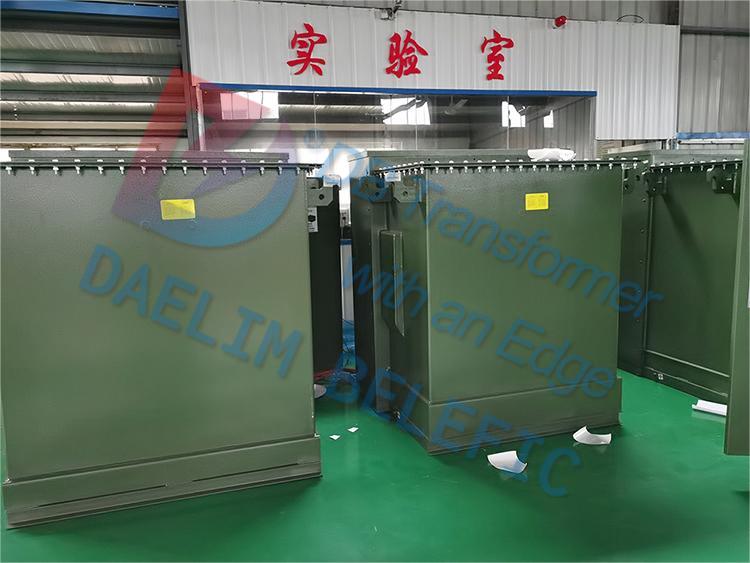
Is the Transformer 100% Efficient?
As efficient as a transformer is, it is not 100% efficient. No transformer is perfectly efficient because some losses always occur during transformer operation. The four main ways transformers lose power are core loss, hysteresis loss, eddy current loss, and copper loss.
Core Loss
Core loss is the power lost due to transformer Eddy current and hysteresis within the transformer core. They are measured at no-load conditions using the open-circuit test. Copper loss occurs when power is lost due to resistance in transformer windings.
Hysteresis Loss
Hysteresis is known as the Device Core's Reversal of Magnetization. The amount of waste is determined by how often there is a magnetic reversal, what grade of iron is being used, as well as the volume and flux density. The following formula determines hysteresis loss:
ηBmax 1.6fV(watts) = Wh, where
η = Steinmetz Hysteresis constant
V = volume of the core in m3
Learn more: DOE Efficiency Standards for Transformers
Eddy Current
Eddy current is the electric source that sends AC into the transformer on the primary side. The alternating magnetizing flux required in the transformer core is determined by this motion. The eddy current produced will oppose this flux and create a heating effect, which causes energy losses.
Copper Loss
Copper loss is the I2R power lost due to electrical resistance in the primary and secondary windings. It is measured under full-loaded conditions using the short-circuit test. In addition, other transformer losses can occur, such as dielectric (insulation) losses and stray-load losses.
Reading more about Transformer Losses
Why is the Efficiency of Transformers High?
There are many reasons why transformer efficiency is high. One reason is that transformers are highly efficient devices that convert electrical energy from one form to another. Another reason is that transformer losses are relatively low.
One of the main reasons transformer efficiency is high is that transformer core losses are very low. The transformer core is made of a material that has very low hysteresis and Eddy current losses. In addition, the transformer windings are made of copper, which has a very low resistance.
To further enhance transformer protection and operational efficiency, integrating a circuit breaker can prevent overloads and short circuits, ensuring the transformer operates within safe parameters.
Learn more: The Ultimate Guide to 2500KVA Transformer
What Affects Transformer Efficiency?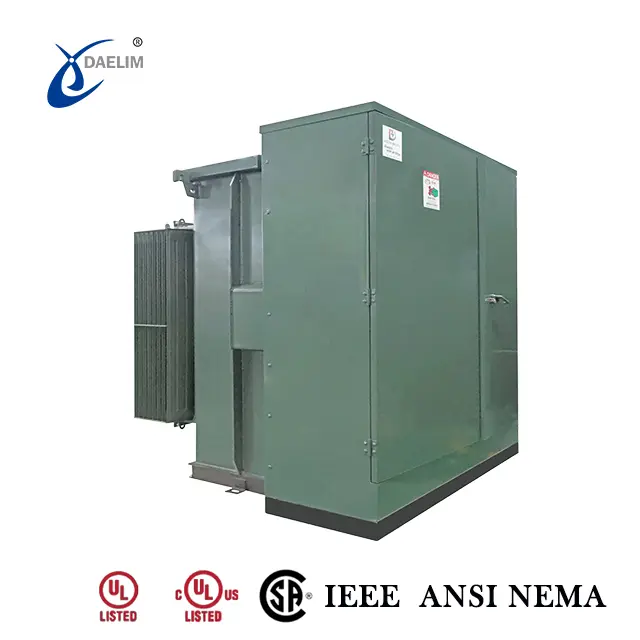
No matter how efficient a transformer can be, it can never reach 100% efficiency capacity. The reason is likely due to the following factors:
The Heating Effect of Coil Current
Power is lost in heat I2R, where R is the coil's resistance, and I is the current flowing through the coil. Once the heat is generated, it must be dissipated to the surrounding environment to avoid damaging the coil.
To increase the efficiency of your transformer, use thick, heat-resistant copper wires. You can also use a coolant to lower the temperature of your transformer.
Heating from Induced Eddy Currents
This type of loss occurs in the core of the transformer. Eddy currents are induced in the transformer core when the changing magnetic field from the primary winding interacts with the secondary winding.
To increase efficiency, use a laminated iron core as each layer is insulated with enamel paint, preventing the flow of eddy currents. The high-resistant enamel paint also reduces the heating effect.
Magnetization of the Iron Core
The energy expense in the magnetization and demagnetization of the iron core can be quite high. This is because the transformer must constantly magnetize and demagnetize the iron core to produce a changing magnetic field in the secondary winding. This process can potentially waste a lot of energy.
To reduce this energy loss, use an amorphous metal alloy for the transformer core. Amorphous metals have a very low hysteresis loss because they don't have a crystalline structure.
Flux Leakage
A portion of the induced magnetic flux from the primary coil is not transmitted to the secondary coil, resulting in a decrease in the electromagnetic flux (EMF) in the secondary coil. The primary winding intertwines with the secondary winding.
The iron core should form a closed loop where the flux can flow. If there are any air gaps in the transformer, the flux will leak out and not be fully utilized, resulting in a decrease in transformer efficiency.
To reduce flux leakage, ensure the transformer is tightly wound and there are no air gaps in the transformer.
Read my article on Basic Guide Of Electrical Transformer
How to Improve Transformer Efficiency?
While the efficiency of your transformer can never reach 100%, there are different ways to improve them from its current state. To make a transformer more efficient, you can add loop area insulation, primary and secondary coil resistance, or flux coupling.
Loop Area Insulation
Insulation between the core sheets is necessary to reduce the impact of eddy currents. That way, the current will flow in the intended path through the primary and secondary windings. As a result, the transformer's efficiency will greatly increase because the transformer will not have to work as hard to overcome the effects of the eddy currents.
Get it now: Comprehensive Guide to Transformer Insulation
Primary & Secondary Coil Resistance
To avoid heating losses, the primary and secondary coil's resistance must be as low as possible. When the resistance is too high, your transformer will lose more energy in the form of heat. Use a coolant to help lower the resistance and improve transformer efficiency.
Flux Coupling
The flux coupling must be as tight as possible to reduce flux leakage. If there is too much flux leakage, the transformer will not be able to utilize all of the flux and will have to work harder, resulting in a decrease in transformer efficiency.
Ensure the transformer is tightly wound and there are no air gaps in the transformer to reduce flux leakage.
Read more: How to choose the best distribution transformer
At What Load is Transformer Efficiency At Its Peak?
A transformer is most efficient when it is operated at its rated capacity. The ideal efficiency for a transformer is around 80-90%. However, no transformer is 100% efficient. Some energy is always lost in the form of heat and noise.
In addition, a transformer also operates most efficiently at a 3/4th full load. Copper loss (Pc) and iron loss (Pi) are rated at their maximum at full load. When the transformer is lightly loaded, the current in both the primary and secondary windings is reduced.
This results in a decrease in Pc and Pi, which leads to an increase in efficiency. However, the transformer must be designed to operate at 1.2 times its rated capacity (120% FL) to accommodate surges in demand.
What is the Most Efficient Transformer?
The most efficient transformer is the one that has the least amount of energy losses. As mentioned earlier, there are three main types of energy losses for a transformer: copper and iron losses, and flux leakage. Due to these losses, there isn't a clear-cut option for the most efficient transformer.
The efficiency of a transformer depends on many factors, such as the type of metal used for the core, the tightness of the flux coupling, and the primary and secondary coil's resistance. Some of the most efficient transformers are those that use amorphous metal cores. This is because amorphous metal has a much lower hysteresis loss than traditional transformer cores made of silicon steel.
Get it now: How Much You Know For The Different Types Of Transformers?
What are the Effects of Transformer Efficiency?
The effects of transformer efficiency can be divided into two main categories: economic and technical.
From an economic perspective, transformer efficiency is important because it directly affects the cost of electricity. The higher the transformer efficiency, the lower the cost of electricity. This is because less energy is lost in heat so that the transformer can generate more power with the same input energy.
Transformer efficiency is crucial from a technical perspective since it affects the overall performance of the electrical system.
A more efficient transformer will result in less heat loss, which means the transformer can operate for a longer period without needing to be replaced or serviced. In addition, a more efficient transformer will generate less noise, which can be important in sensitive applications.
Read my article What You Need To Know About Substation Transformer
What are the Standards for Transformer Efficiency?
Transformer efficiency standards are the set of regulations and specifications that determine how efficient your transformers are. Here we mainly talk about three standards of transformer efficiency standards: IEEE, CSA, and IEC.
The IEEE standard, IEEE Std 693-2015, is the most widely used for transformer efficiency. It defines the minimum efficiency requirements for both distribution and power transformers.
The CSA C802 is formulated by the Canadian Standards Association, regarding the efficiency value requirements of the power transformer. This Standard applies to power transformers rated from 501 to 10 000 kVA.If you are a customer from Canada, you need to pay special attention to this standard.
The IEC standard, IEC 60076-11, is a more recent standard that focuses on distribution transformers. It includes both energy efficiency and no-load loss requirements.
Reading Resources
The Ultimate Guide To IEC 60076 Standard
Ultimate Guide To IEEE C57 Standard
CSA C88 Standard For Power Transformers
CSA C802 transformer efficiency
How to Find The Ideal Efficiency For Your Transformer?
Using the transformer equation, you can determine the ideal efficiency for a transformer. This equation considers the transformer's input power, output power, and losses.
The ideal efficiency is defined as the ratio of the output power to the input power. Therefore, to find the ideal efficiency, you must first determine the transformer's input and output power.
You can determine the input power by multiplying the voltage across the primary winding by the current through the primary winding. Find the output power by multiplying the voltage across the secondary winding by the current through the secondary winding.
Once you have determined the input and output power, you can calculate the ideal efficiency by dividing the output power by the input power.
Learn more: 13.8 kV 10.5 MVA Substation Transformer for Ecuador
Is There a Real-World Efficiency Limit For Transformers?
Yes, there is a real-world efficiency limit for transformers. This limit is determined by the laws of physics and the material properties of the transformer.
The real-world efficiency limit for a transformer is approximately 98%. This means a transformer can never be 100% efficient because there are always losses associated with the transformer.
All Day Transformer Efficiency
Transformers are available in various sizes, rated for various voltages and frequencies, and capable of delivering a wide range of voltages. The output to input ratio (wattage) determines the type of transformer needed.
However, other forms of transformers are unable to measure their efficiency. For example, distribution substation transformers are often left energized and do not allow for easy input or output power measurement. Therefore, distribution substation transformer efficiency is often estimated using load loss and no-load loss data instead of using the transformer efficiency equation.
What is the Difference Between Transformer Efficiency Classes?
There are three main classes of transformer efficiency: standard, premium, and super-premium.
Standard transformer efficiency is the minimum efficiency required by the IEEE and IEC standards.
Premium transformer efficiency is above the standard efficiency requirements.
Super-premium transformer efficiency is the highest transformer efficiency and is typically used in critical applications.
Get it now: How to the analysis of gases and check the oil level in transformer
Related Products
Related Article
Analysis of electric transformer noise problem
This article mainly describes the causes of the transformer noise, how to analyze power transformer noise and solutions, how to reduce transformer noise.
How to test a power transformer?
Power transformers need to undergo rigorous testing before they leave the factory and are installed to ensure that the transformers can operate safely and efficiently.
Electrical Transformer Protection Knowledge Guide
Electrical Transformer Protection Knowledge Guide, Transformers are very important equipment in the power system, so it is critical to ensure the normal and safe operation of transformers.
13.8 kV 10.5 MVA Substation Transformer for Ecuador
A customer from Ecuador contacted Daelim Transformer for a 10.5MVA substation transformer (13.8kV high voltage, 2.4kV low voltage). Daelim Transformer provided a customized solution, conducted virtual factory tours, ensured rigorous quality control via video inspections, and offered post-delivery online training and ongoing support, fostering a successful partnership.
20MVA Power Transformer for the United States
This project involves the development of a 20 MVA three-phase power transformer tailored for the United States market. The primary voltage is 24.94kV, and the secondary voltage is 4.16kV, indicating it functions as a step-down transformer. The design and production fully comply with IEEE C57.12.00 standards and have passed third-party UL team testing. All accessories also adhere to IEEE standards. FR3 vegetable oil serves as the insulating liquid for the transformers.
2600 kVA Pad Mounted Transformer For Blockchain In Kansas
This morning, I received the on-site photos of the pad-mounted transformers from the customer, and I was overwhelmed with excitement and joy. These pad-mounted transformers are installed at a 20MW blockchain site in Kansas, USA. A total of 5 sets of 2600 kVA pad-mounted transformers, all UL-listed, are being deployed at this site. Currently, 3 sets have already been installed onsite and are scheduled to be powered on imminently.

